As a car owner, you may wonder if a weight distribution hitch increases towing capacity. We have researched this topic for you, and here is what we found.
Your vehicle's towing capacity isn't increased with a weight distribution hitch. However, the weight distribution system makes towing at the highest capacity of the hitch possible.
Knowing the uses of a weight distribution hitch and how it works is helpful. Keep reading to get detailed information.
Can A Weight Distribution Hitch Increase Towing Capacity?
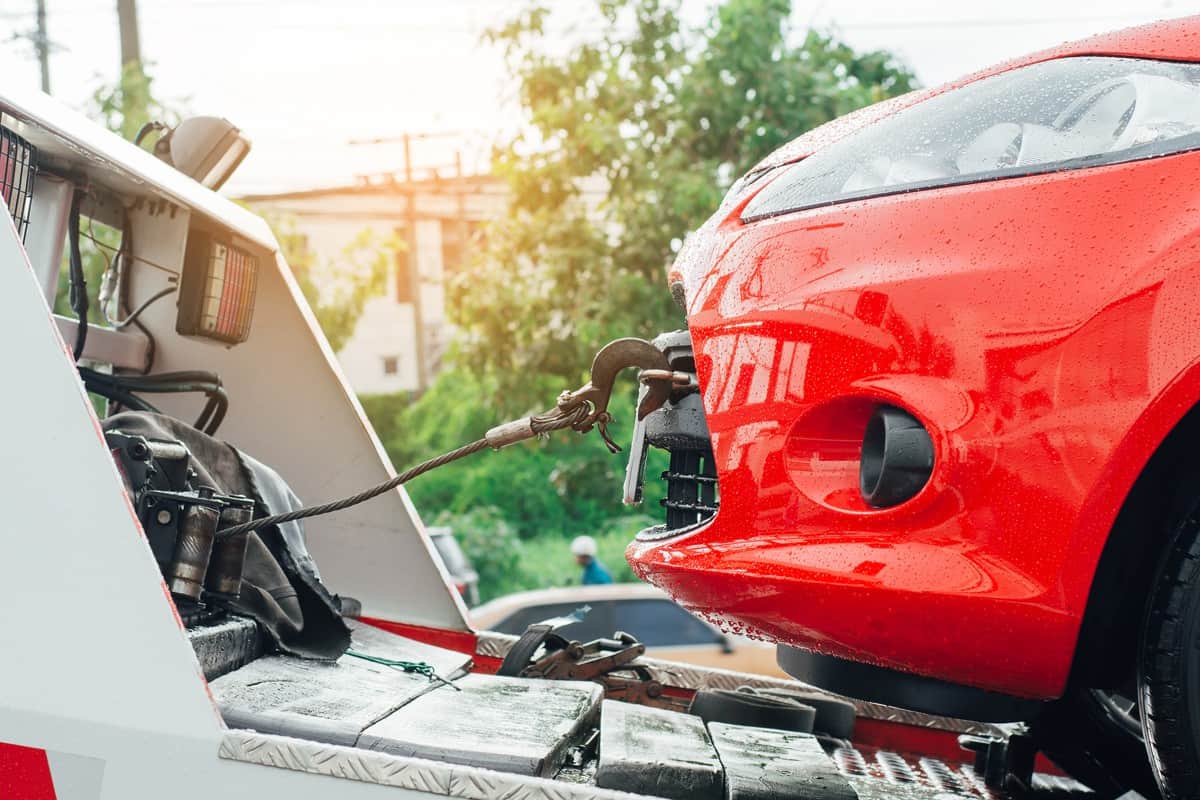
A weight distribution hitch does not increase a vehicle's towing capacity. Rather, it will help you maximize your gross combined weight rating.
The vehicle's manufacturer often specifies towing capacity. The towing capacity differs from vehicle to vehicle, and that figure won't increase with a weight distribution hitch.
If the tongue weight exceeds the gross trailer weight, the trailer's hitch and the towing vehicle's rear axle may dive, sending the trailer's front toward the ground and lifting the towing vehicle's front off the ground.
The gross trailer weight (GTW) refers to the trailer's weight, including any cargo, gasoline, and additional items. In contrast, the tongue weight is the part of the cargo positioned forward in the trailer to press on the hitch.
However, if your tow vehicle dives too deep, which can happen when you need to brake rapidly, you may lose control of the front axle's wheels and braking traction. This will compromise your vehicle and road safety.
In cases when the relative tongue weight is extremely low, a trailer will be more likely to lose control and swing back and forth. Given these considerations, it's very important to balance tongue and gross trailer weight.
What Does A Weight Distribution Hitch Do?
Although a weight distribution system cannot raise the overall weight a tow vehicle can pull past its maximum capacity, it can enhance handling by shifting some weight from the tongue to the other axles.
Due to this, the weight distribution hitch improves a vehicle's capacity to turn, stop, and steer, especially when there are heavy loads involved, which can be challenging to maneuver in a safe and controlled manner.
With a weight distribution hitch, you need to consider the ratio of the tongue weight to the gross trailer weight. You should also consider how much tongue weight a more significant load adds.
A weight distribution system is crucial because it alleviates these issues by shifting part of the added tongue weight from the tow vehicle's back axle to its front axle.
As a result, everything comes into balance with that leverage, and driving performance significantly rises.
However, you should keep in mind that the tow vehicle's axles each have a gross weight rating. By adjusting the weight distribution system, you can ensure that the weight is distributed correctly.
Click here to view this weight distribution hitch on Amazon
Can I Increase The Towing Capacity Of My Vehicle?
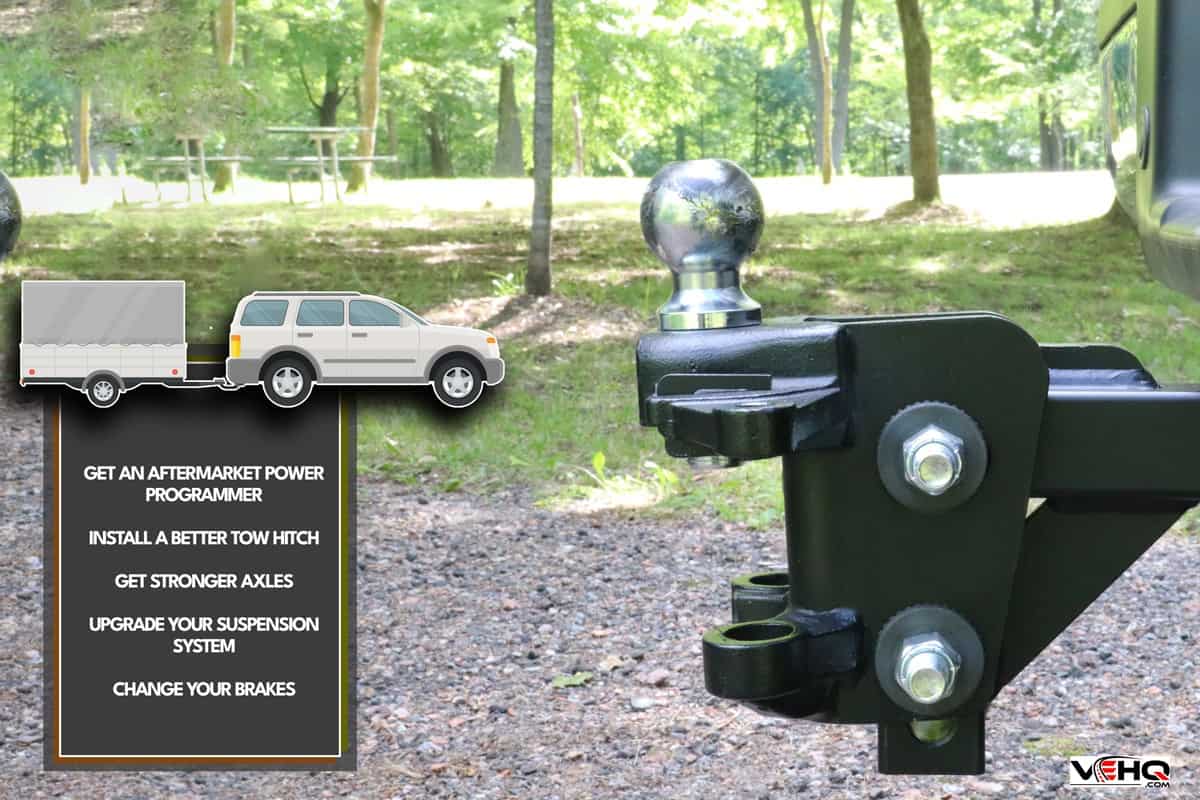
Your car's towing capacity may not be a significant concern, depending on the type. Large trucks and SUVs are reasonably durable and can meet most customer towing requirements.
But if your vehicle is unable to manage a load, you may be wondering if its towing capacity can be increased. The maximum towing capacity that a vehicle is designed and built to have cannot be exceeded without significant vehicle changes.
However, there are simple adjustments you can make so that your load's weight is distributed more evenly, making towing heavy loads safer.
So it is possible to modify and increase your vehicle's towing capability. This can be achieved by replacing the parts that carry and pull weight for your vehicle.
However, while it is possible to upgrade and modify your truck for better towing, you should always do some research before making any changes.
Failure to follow the proper steps might result in a breakdown because the vehicle does not have a maximum towing capability. You can also take your vehicle to a certified repair shop to increase its towing capability.
Here are some simple ways to improve your car's towing capacity.
- Get an aftermarket power programmer
- Install a better tow hitch
- Get stronger axles
- Upgrade your suspension system
- Change your brakes
Does A Weight Distribution Hitch Decrease Tow Ball Weight?
The weight transferred from a towing vehicle to a car's tow ball is called the tow ball weight. Most trailer weight is supported by the wheels, while the tow ball transfers some of the weight to the vehicle pulling the trailer.
The weight of the tow ball affects the trailer's stability. If the load is too small, your trailer will be unstable, but if it is too heavy, the GVM of the vehicle may be exceeded.
A weight distribution hitch might be helpful because it levers up the back of the car while levering down the second car's front, thereby reducing some of the tow ball weight.
Does a 3/4 Ton Truck Need Weight Distribution Hitch?
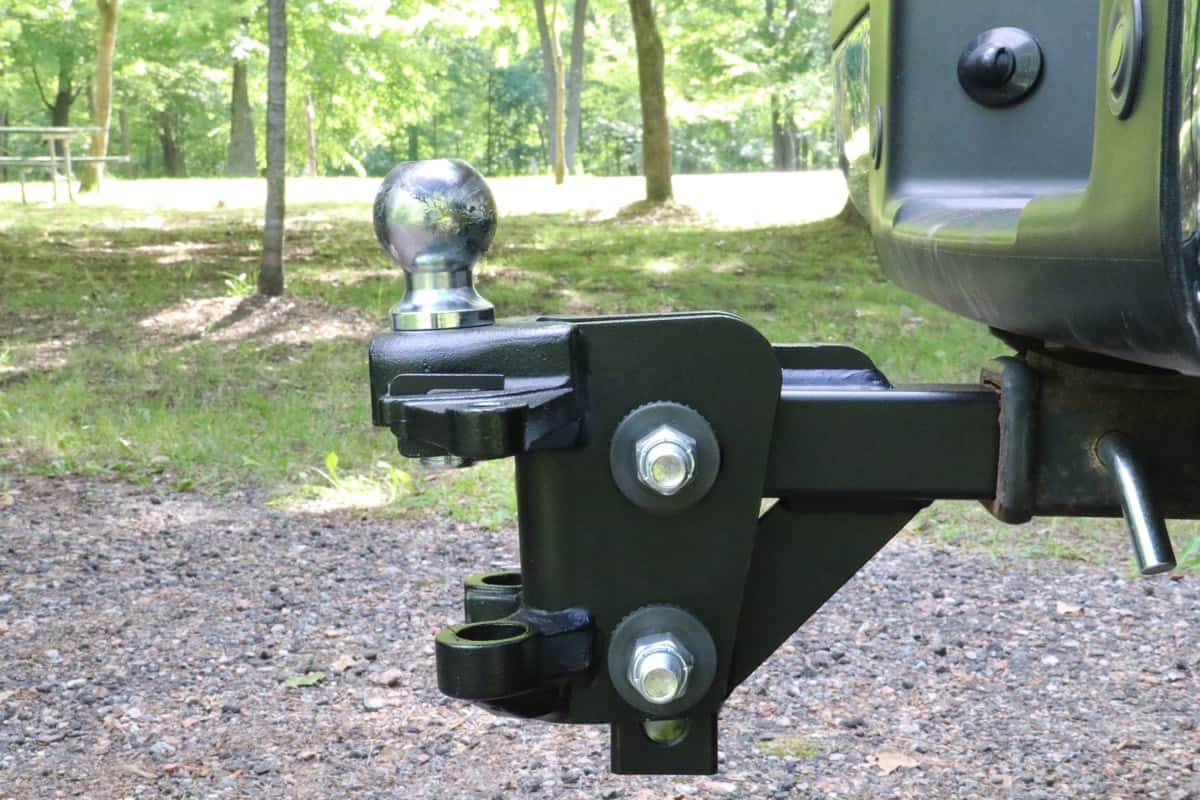
You can check your owner's manual to learn if your truck needs a weight distribution hitch. The rear axles and frames of 3/4-ton trucks are built to be more robust, and these vehicles can automatically distribute the weight of a trailer.
Due to this, most manufacturers do not state that installing a weight-distribution hitch on their 3/4-ton pickup trucks is necessary. However, this does not indicate that one should not be utilized.
Installing a weight-distribution hitch on a 3/4-ton truck will result in significant improvements. Using it will make the experience of towing more enjoyable.
If the weight of the trailer exceeds more than half of the total weight of the towing vehicle, you should consider using a weight distribution hitch.
Can You Back Up With A Weight Distribution Hitch?
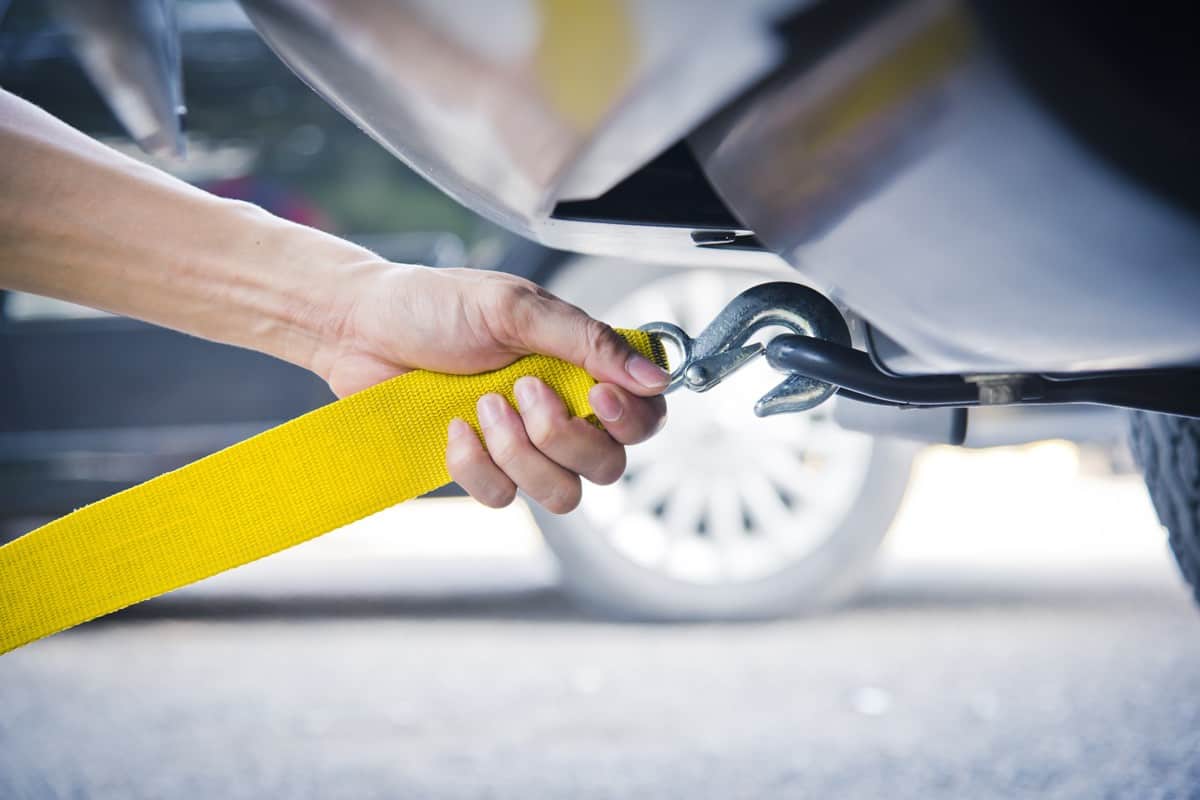
This greatly depends on the kind of weight distribution hitch that you have.
With some models, you will not be able to back up at all. Some models only enable backing up in a straight path, and others allow you to turn around and back up correctly.
If your vehicle has a weight distribution system with sway control, you should try to back up as little as possible. If you are going to back up regardless, you need to disable the sway control and the spring bars first.
But you shouldn't have any trouble backing up if your vehicle doesn't have a sway control system installed. You should avoid making quick turns, as this increases the risk of jackknifing.
What Weight Distribution Hitch Is The Best?
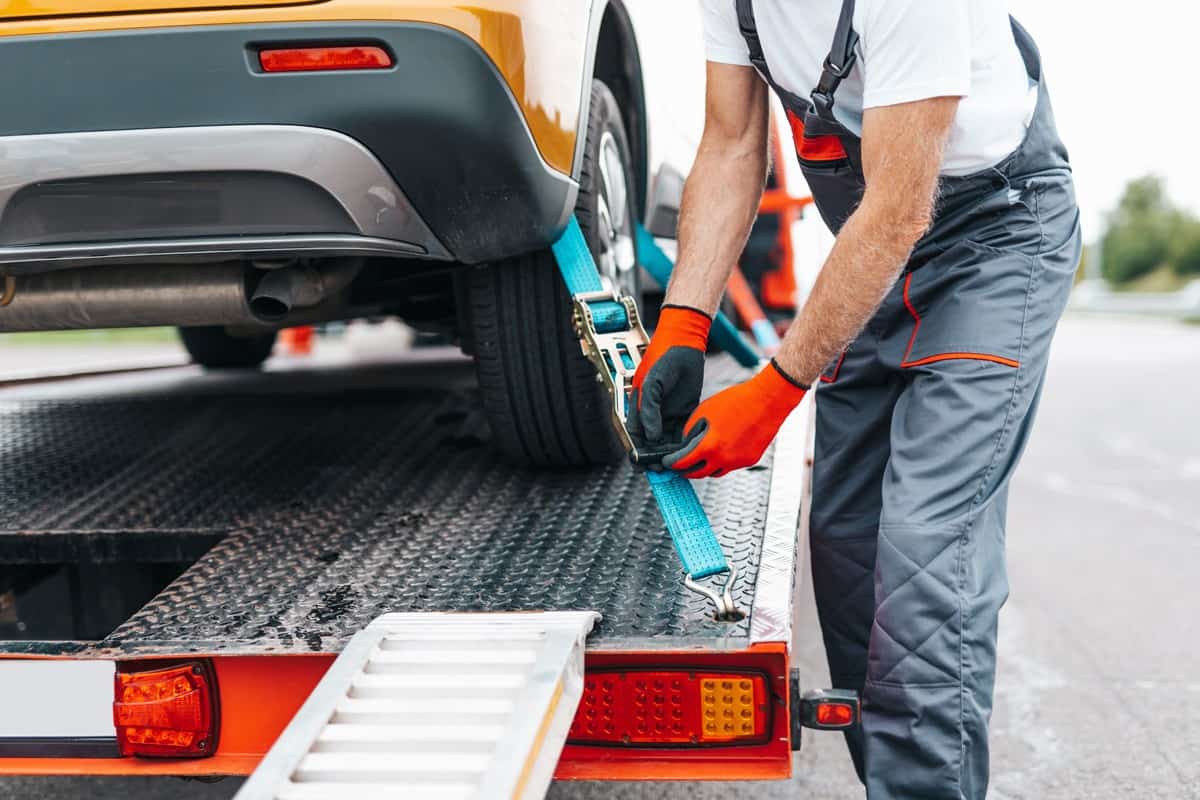
The Andersen hitch is generally considered to be the most effective and accessible weight distribution hitch. Most vehicle owners prefer this trailer stabilizer hitch since it does not use cumbersome steel spring bars and is much easier to work with.
Additionally, you don't need to disconnect anything while backing up or driving in severe weather, unlike with other spring bar weight distribution hitch systems that require add-on friction controls.
While the Andersen hitch has advantages, it also has some drawbacks. The hitch can fail when you use the emergency brake. Additionally, the hitch does not have enough clearance for stability.
To Wrap Up
A weight distribution hitch can be helpful, although it does not increase the towing capacity of a vehicle.
A weight distribution system has other functions, like shifting part of the tongue weight from the tow vehicle's back axle to its front axle.
To increase the towing capacity of your truck, you should take it to a professional.
If you enjoyed reading this post, here are similar articles you may like:
Chain Vs. Bar For Weight Distribution Hitch: Which Is Best?
Does Weight Distribution Hitch Reduce Tongue Weight?
Can You Use Airbags With A Weight Distribution Hitch? Should You?

